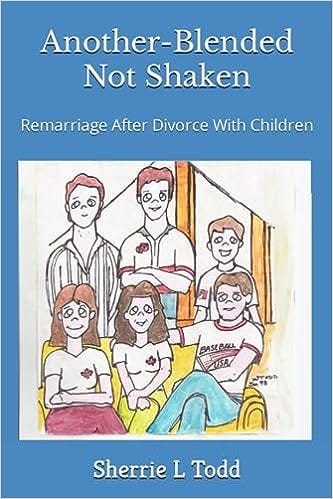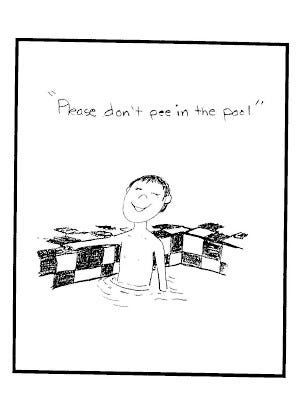Neither this edition [2015] nor the original [2002-Blended Not Shaken] was the result of a formal clinical study, nor an accumulation of case histories gathered by a professional therapist. This 2nd edition like the 1st was entirely the result of a twenty-six-year slice-of-our-life served with the same from the lives of other blended-families interviewed.
It’s how we came together with a firsthand candid look at the lessons we learned with what worked - and often - what did not.
Early on what helpful published information readily available to stepfamilies until the last few years of the 20th Century was sparse, fractured and so poorly marketed it was almost invisible. As invisible as the issue of divorce and remarriage - so common we took it for granted.
And, so common not even the people living with the [additional] strain caused by remarriage with children, recognized that their plight should have been a cultural - almost - a species crisis.
Each newly remarried couple struggled in silent isolation convinced they were alone with their specific problems. Far too many were certain their questions, their confusion, their fear and frustrations were unique - to them.
Newly formed step-blended-families became vulnerable to an unintended conspiracy of ‘silence’ borne from the original shame a failed marriage once carried, and for many, still does.
Though divorce among original marriages remains steady at between 41 to 44% [depending on region] other social changes have escalated. In 1976, 61% or original families had one parent at home fulltime with their offspring. By 2009 a parent at home fulltime was an endangered species found in only 27% of original households. But for step-blended families though stats were difficult to find were cited at only 2.4% having one fulltime parent at home. [Since Covid much of that trend recovered, likely due to Covid when working parents rediscovered their kids. Pew Research recently set fulltime-stay-at-home parenting at 18% - with 25% dads and 29% moms.]
Adding college student loans that forced both parents to remain in the workforce, to second and third marriages crumbling - often within months of the spoken vows - family structure steadily teetered. Never mind the factor of accelerated technology that has far too many distracted parents and their kids [as young as two] with their faces on a phone screen or some other electronic device…
So, as the first day of the 21st Century dawned for millions of blended-families they still faced the social harvest of seven straight decades in a family-unit-shift that remains daunting.
Okay - where am I going with this for you?
In 1990 my [new] husband and I were basically green and learning as we went. Not green as parents, but literally learning what it meant to be a stepparent as we went. And certainly not experienced enough to field calls from our kids’ teachers who were surprised to discover they weren’t dealing with behavior problems from a student in a newly formed stepfamily or other remarried parents seeking advice from us.
At the time, still writing some freelance features for the Coloradoan/USA TDAY my journalistic curiosity vis-a-vis my new parenting role kicked in and I went hunting. I was certain there had to be several how-to books and published essays in journals by experts offering insight for the issues faced by remarrying parents. By 1993, three years after my own remarriage, my research had produced almost zip, zilch, nada…
I found some interesting [legal] rulings by family court judges, a chapter here and there in university doctoral studies or a mention in obscure chapters as part of a larger social study, but generally not much specifically targeted to and for the blended family. However, absolutely nothing from any first-person perspective which made finding anything presented with practicality or humor ranking right up there with mermaid sightings. What my research did uncover was a huge void and the tip of a cosmic pyramid almost completely covered by the sand of cultural lethargy.
Identifying this hidden, unidentified gap spurred me to journal our experiences. By 1997, I felt ready. We had weathered a number of family storms. I had joined then formed a local chapter for The Stepfamily Association of America then met and interview several members. The Denver Post liked my story idea and decided it could be a multi-week column not just a single feature.
All of the hurdles and resulting solutions I’ll present from my book ANOTHER - BLENDED NOT SHAKEN [2015 Amazon] are from firsthand experience. The recommendations offered may have merit for your blended family or not. None are intended as the answer or solution for your issues, but as a place from which you might start. These ideas may need to be modified to fit your circumstances as each and every blended family, is unique.
…Ohhh, and what was it we had done? Meals! Early on we ate all of our meals together, as a family. We often prepared them together, set the table together for every evening during the week and at least breakfast on the weekends. And every time we sat down together, we shared and debated our opinions, we share our plans, and we shared each day
…
Discussion about this post
No posts






